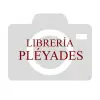
Haz clic en la imagen para ampliarla
CORPUS STYLISTICS: A PRACTICAL INTRODUCTION
THEORY AND PRACTICE
DAN MCINTYRE
EDINBURGH UNIVERSITY PRESS
9781474413213
No disponible, contactar
Supported by detailed instructions on how to access and use relevant corpus software, this is a user's guide to doing corpus stylistic analysis. For students and researchers in stylistics new to the use of corpus methods and theories, the book presents a 'how-to' guide; for corpus linguists it opens the door to the theories, models and frameworks developed in stylistics that are of value to mainstream corpus linguistics.
El contacto de seguridad todavía no está disponible. Si necesitan esta información solicítenla mediante este enlace
Este artículo no tiene advertencias de seguridad. Si tienen alguna duda al respecto consulten al contacto de seguridad.




